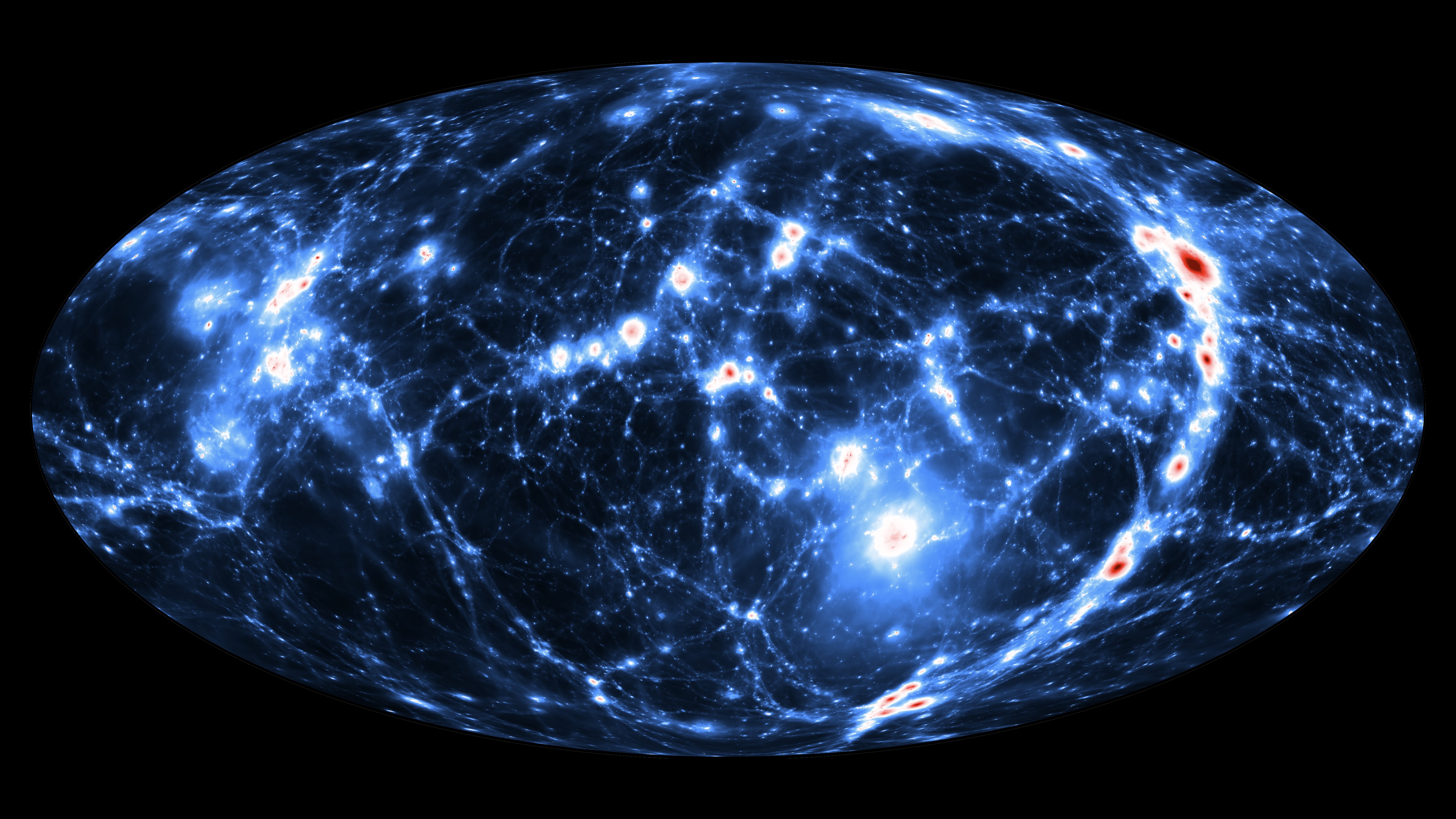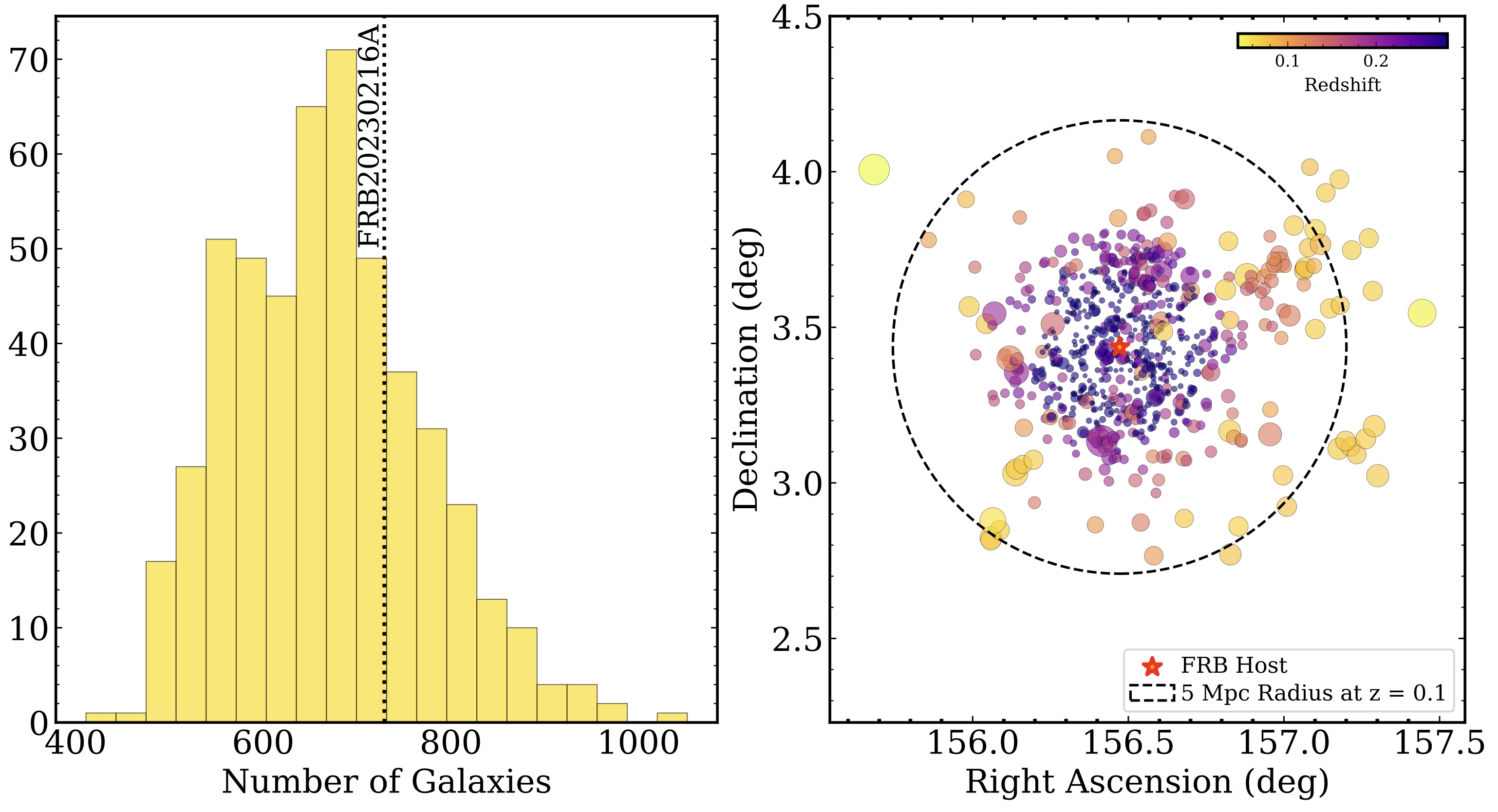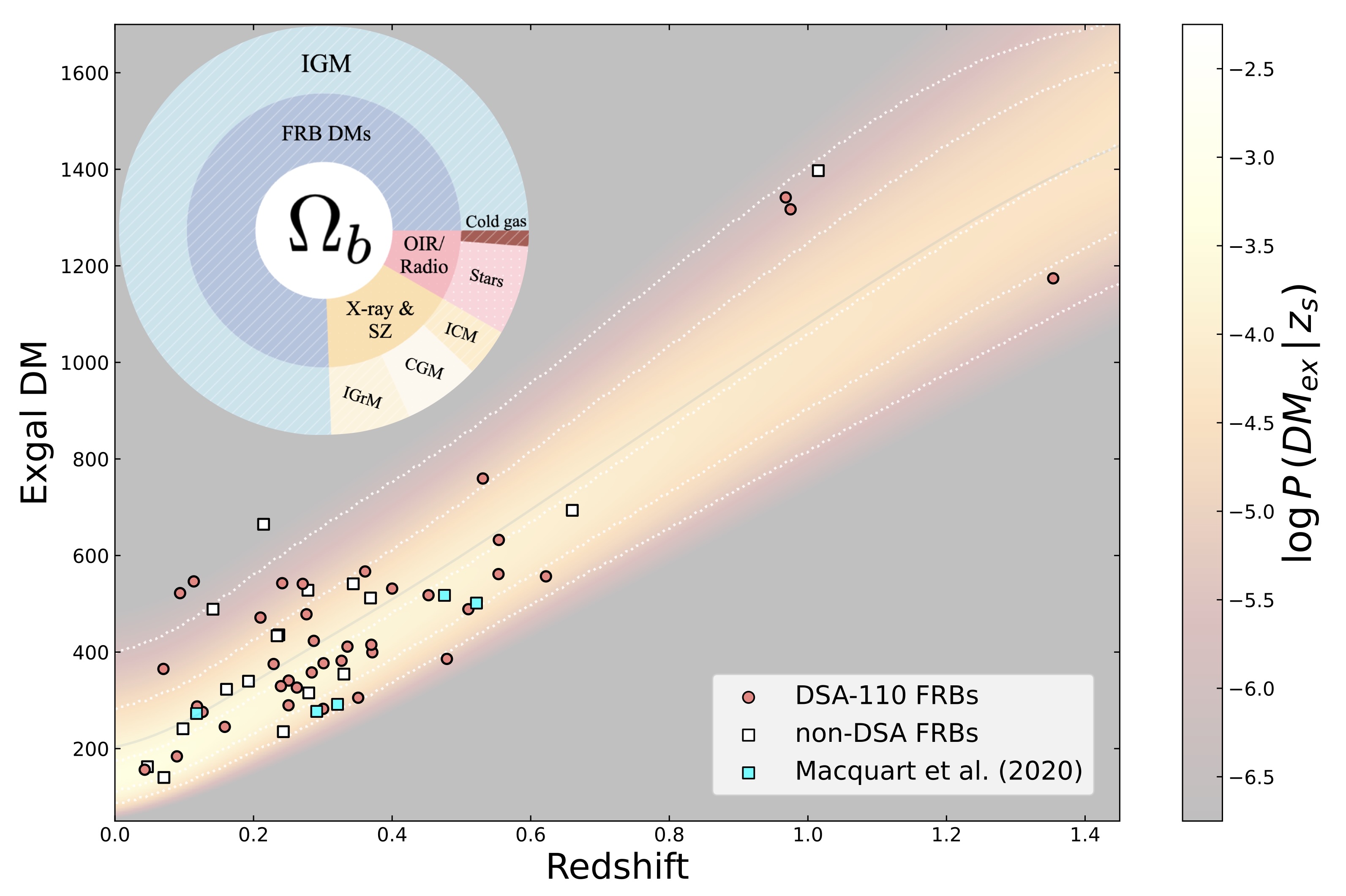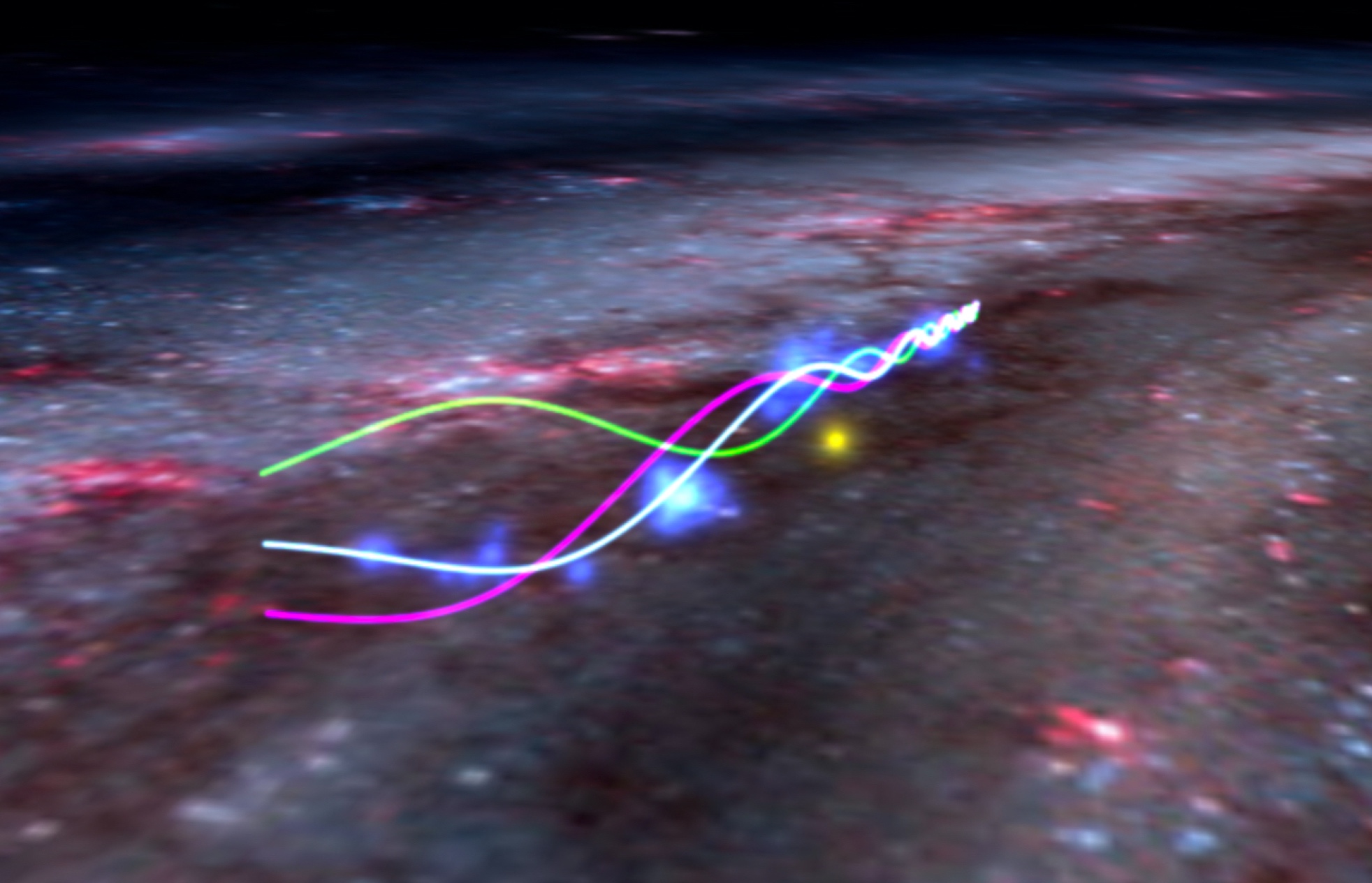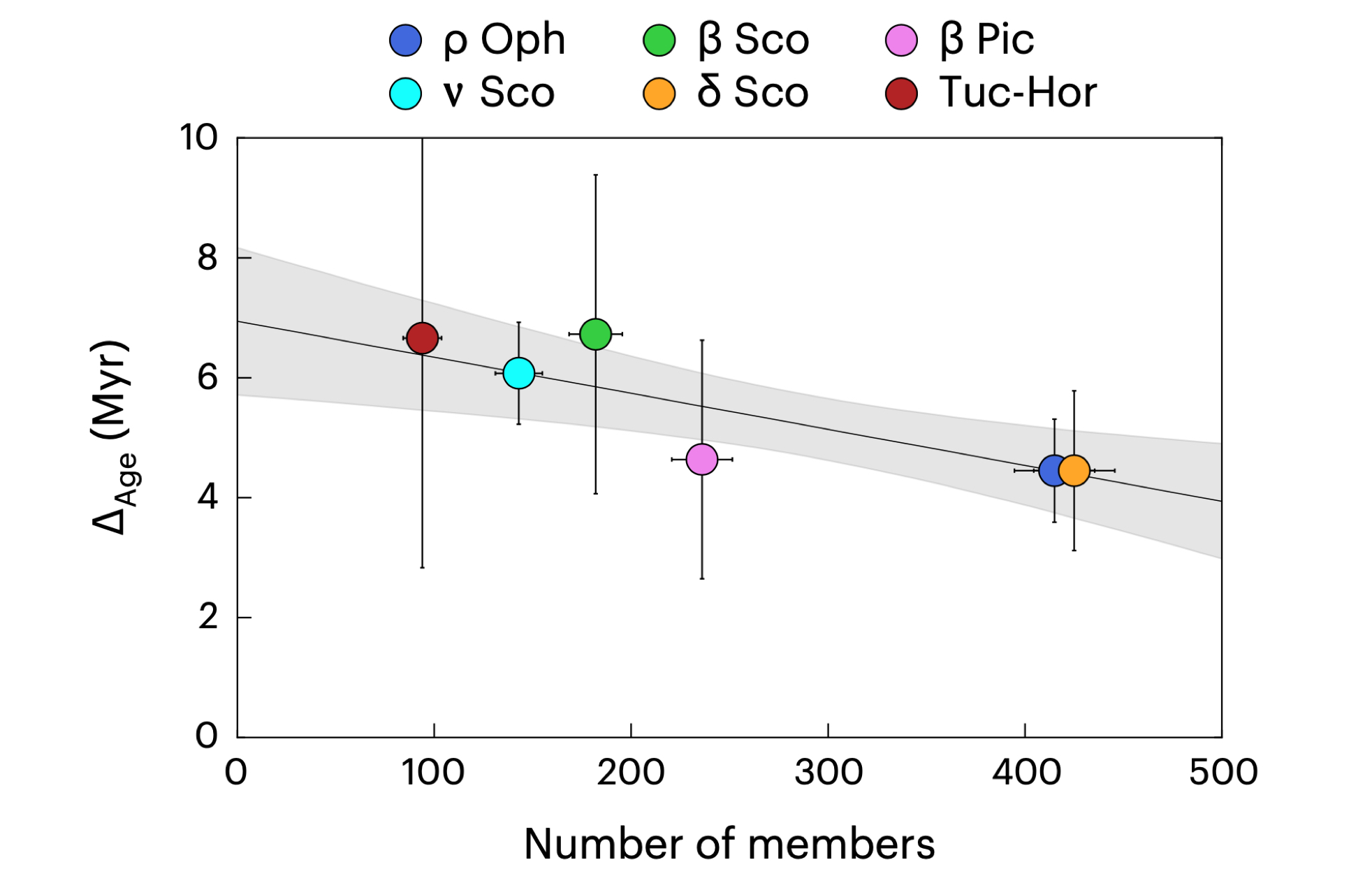PhD Student • Harvard University • ralf.konietzka@cfa.harvard.edu •
I am a PhD student in Astrophysics & Astronomy at Harvard University, working with Prof. Lars Hernquist.
My research focuses on cosmology and extragalactic astronomy, with a specific emphasis on Fast Radio Bursts, a new class of cosmological transients.
Using a combination of numerical simulations, analytic theory, observations, and data science, I investigate how we can use cosmological tracers to study the evolution of our Universe.
Follow @RalfKonietzka for research, news and more.
Education
Projects
Together with Lars Hernquist, Liam Connor, Vadim Semenov, Angus Beane, Volker Springel
Paper
Video
The dispersion measures (DMs) of Fast Radio Bursts (FRBs) arise predominantly from free electrons in the large-scale structure of the Universe. The increasing number of FRB observations have started to empirically constrain the distribution of cosmic baryons, making it crucial to accurately forward model their propagation within cosmological simulations. In this work, we present a method for measuring FRB DMs in IllustrisTNG that continuously traces rays through the simulation while reconstructing all traversed line segments within the underlying Voronoi mesh. Leveraging this technique, we create over 20 publicly available DM catalogs, including a full-sky DM map observed from a Milky Way-like environment. Our method addresses a problem in previous TNG-based studies, in which a sparse snapshot sampling in the path integral leads to a misestimation of the standard deviation and higher moments of the DM distribution p(DM|z) by over 50%. We show that our results are consistent with the most recent observational data from the DSA-110, ASKAP, and CHIME. We offer a functional form for p(DM|z) that provides very good fits across all redshifts from 0 to 5.5, showing that the previously proposed log-normal distribution is not well matched to the data. We find that using simulation box sizes smaller than 35 Mpc h-1 or resolutions with baryonic masses of less than 5 × 108 h−1 M☉ can distort the derived DM signal by more than 8%. Our findings provide new insights into how the cosmic web shapes FRB signals, and highlight the importance of accurate methodology when comparing cosmological simulations against observations.
Together with Maryam Hussaini, Liam Connor, Vikram Ravi, Jakob Faber, Kritti Sharma, Myles Sherman
Paper
The distribution of baryons in the Universe remains a fundamental open question in astronomy, and the dispersion measure (DM) of Fast Radio Bursts (FRBs) serves as a valuable tool for probing this cosmic gas. We investigate the impact of the foreground cosmic web on FRB DMs using 61 localized FRBs and public galaxy catalogs. We test for the large-scale structure's impact on cosmological DM using two methods. First, we searched for a correlation between galaxy number density along the line of sight and extragalactic DM, and found a statistically significant positive correlation (p = 1.76×10−5). The shape of this correlation contains information about the cosmic baryon distribution, and can also be used to better constrain host galaxy DM by providing an estimate of the cosmic contribution on a per-source basis. We observe similar correlations in a mock FRB survey based on the IllustrisTNG cosmological simulation, where the DM is dominated by filaments in the IGM and not by halos. Next, we performed a stacking analysis that measures the average excess DM as a function of impact parameter of foreground galaxies to obtain spatial information about how ionized gas is distributed around galaxy halos. We report excess DM in the stacked signal for impact parameters up to Mpc scales (∼3σ). Finally, we identified FRBs that do not appear to intersect intervening halos within rvir, allowing us to estimate the fraction of baryons that reside in the IGM. We find fIGM≥0.69 at 95% confidence, indicating significant astrophysical feedback.
Together with Liam Connor, Vikram Ravi, Kritti Sharma, Stella Koch Ocker, Jakob Faber, Gregg Hallinan, Charlie Harnach, Greg Hellbourg, Rick Hobbs, David Hodge, Mark Hodges, Nikita Kosogorov, James Lamb, Casey Law, Paul Rasmussen, Myles Sherman, Jean Somalwar, Sander Weinreb, David Woody
Paper
Approximately half of the Universe's dark matter resides in collapsed halos; significantly less than half of the baryonic matter (protons and neutrons) remains confined to halos. A small fraction of baryons are in stars and the interstellar medium within galaxies. The lion's share are diffuse (<10−3 cm−3) and ionized (neutral fraction <10−4), located in the intergalactic medium (IGM) and in the halos of galaxy clusters, groups, and galaxies. This diffuse ionized gas is notoriously difficult to measure, but has wide implications for galaxy formation, astrophysical feedback, and precision cosmology. Recently, the dispersion of extragalactic Fast Radio Bursts (FRBs) has been used to measure the total content of cosmic baryons. Here, we present a large cosmological sample of FRB sources localized to their host galaxies. We have robustly partitioned the missing baryons into the IGM, galaxy clusters, and galaxies, providing a late-Universe measurement of the total baryon density of Ωbh70=0.051±0.006. Our results indicate efficient feedback processes that can deplete galaxy halos and enrich the IGM (fIGM=0.76±0.11), agreeing with the baryon-rich cosmic web scenario seen in cosmological simulations. Our results may reduce the "S8 tension" in cosmology, as strong feedback leads to suppression of the matter power spectrum.
Together with Alyssa Goodman, Catherine Zucker, Andreas Burkert, João Alves, Michael Foley, Cameren Swiggum, Maria Koller, Núria Miret-Roig
Paper
Augmented Reality Figure
Outreach Video
Our Sun lies within 300 pc of the 2.7-kpc-long sinusoidal chain of dense gas clouds known as the Radcliffe Wave. The structure's wave-like shape was discovered using 3D dust mapping, but initial kinematic searches for oscillatory motion were inconclusive. Here we present evidence that the Radcliffe Wave is oscillating through the Galactic plane while also drifting radially away from the Galactic Center. We use measurements of line-of-sight velocity for 12CO and 3D velocities of young stellar clusters to show that the most massive star-forming regions spatially associated with the Radcliffe Wave (including Orion, Cepheus, North America, and Cygnus X) move as if they are part of an oscillating wave driven by the gravitational acceleration of the Galactic potential. By treating the Radcliffe Wave as a coherently oscillating structure, we can derive its motion independently of the local Galactic mass distribution, and directly measure local properties of the Galactic potential as well as the Sun's vertical oscillation period. In addition, the measured drift of the Radcliffe Wave radially outward from the Galactic Center suggests that the cluster whose supernovae ultimately created today's expanding Local Bubble may have been born in the Radcliffe Wave.
A 3D View of Orion: I. Barnard's Loop
Together with Michael Foley, Alyssa Goodman, Catherine Zucker, John Forbes, Cameren Swiggum, João Alves, John Bally, Juan Soler, Josefa Großschedl, Shmuel Bialy, Michael Grudić, Reimar Leike, Torsten Enßlin
Paper
Barnard’s Loop is a famous arc of Hα emission located in the Orion star-forming region. In this work, we investigate possible formation mechanism for Barnard’s Loop.
Using 3D dust maps, we characterize the 3D topology of the large-scale Orion region, showing Barnard’s Loop’s correspondence with a large asymmetric dust cavity around the OBP-Near/Briceno-1 (OBP-B1) cluster. The molecular clouds Orion A, Orion B, and Orion λ reside on the shell of this cavity.
We find that the large-scale gas in the region appears to be expanding, likely propelled by a combination of feedback from OBP-B1 and the cluster Orion X. Estimates of gravitational effects from both stars and gas indicate that the expansion of this asymmetric cavity likely induced anisotropy in the kinematics of OBP-B1. We conclude that feedback from OBP-B1 has affected the structure of the Orion A, Orion B, and Orion λ molecular clouds and may have played a major role in the formation of Barnard’s Loop.
The Passage of the Solar System through the Edge of the Local Bubble
Together with Merav Opher, Abraham Loeb, Catherine Zucker, Alyssa Goodman, João Alves, Alexandra Worden, Evan Economo, Jesse Miller, Marc Kornbleuth, Josh Peek
Paper
The Sun moves through the interstellar medium (ISM) making the conditions outside the solar system vary with time. Today’s solar system is protected from interstellar particles by the heliosphere, the bubble formed by the solar wind as the Sun moves through the ISM, which engulfs all the planets.
However, there is geological evidence from 60Fe that the Earth was in direct contact with the ISM 6-7 million years ago. During the same time, the Sun crossed the edge of the Local Bubble. The expansion of the Local Bubble swept up the ambient ISM into an extended shell that now fragmented and collapsed into the most prominent nearby molecular clouds. Using a state-of-the art magnetohydrodynamic model of the heliosphere, we show that due to the passage of the solar system through the edge of the Local Bubble, the heliosphere is shrunk to a scale smaller than the Earth's orbit (0.7 AU) exposing the Earth to the cold dense ISM, consistent with the evidence of 60Fe.
The direct contact of the Earth with the ISM, could have drastic terrestrial effects 6-7 million years ago. In particular, such scenario can be used to explain the cooling seen by Oxygen isotopes measured in deep sea Foraminifera.
Insights into star formation and dispersal from the synchronization of stellar clocks
Together with Núria Miret-Roig, João Alves, David Barrado, Andreas Burkert, Sebastian Ratzenböck
Paper
Age is one of the most fundamental parameters of a star, yet it is one of the hardest to determine as it requires modelling various aspects of stellar formation and evolution. When we compare the ages derived from isochronal and dynamical traceback methods for six young stellar associations, we find a systematic discrepancy. Specifically, dynamical traceback ages are consistently younger by an average of ΔAge = 5.5 ± 1.1 Myr. We rule out measurement errors as the cause of the age mismatch and propose that ΔAge indicates the time a young star remains bound to its parental cloud before moving away from its siblings. In this framework, the dynamical traceback ‘clock’ starts when a stellar cluster or association begins to expand after expelling most of the gas, whereas the isochronal ‘clock’ starts earlier when most stars form. The difference between these two age-dating techniques is a powerful tool for constraining evolutionary models, as isochronal ages cannot be younger than dynamical traceback ages. Measuring the ΔAge accurately and understanding its variations across different environments will provide further information on the impact of local conditions and stellar feedback on the formation and dispersal of stellar clusters.

